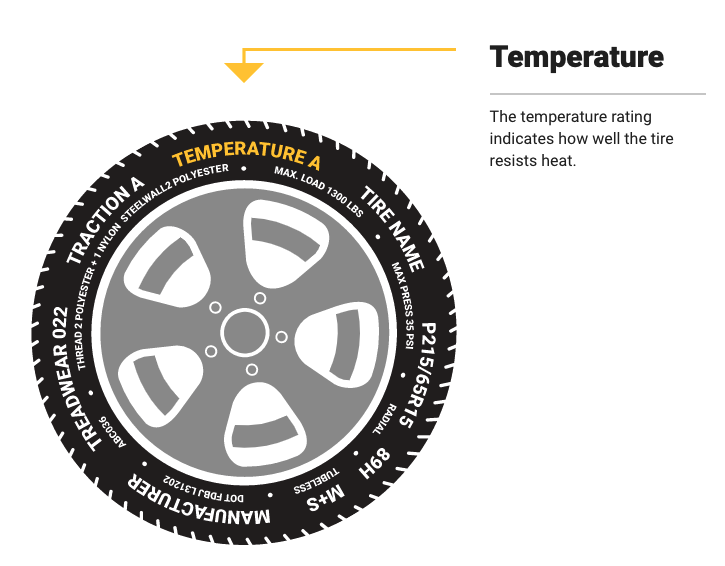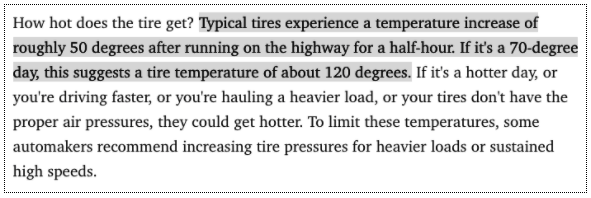Your Shopping Cart
Your cart is empty.
Subtotal ( items)
Instant Rebate Applied:
Promo Code Applied: ID.me Discount Applied:
Have a Promo Code?
Size:
Item
Item
Selected for:
/ each
Add-Ons
Wireless air pump capable of pumping up to 150 psi with 2000 MAH power bank.



Fully protect your clothes and vehicle interior during transportation of your tires. For Tires up to 31" tall and wheels up to 22".
Per sensor
Add TPMS Sensors
/per sensor
Please confirm the make, year, model and trim of the vehicle you want to purchase for:
How many sensors do you need?
The vehicle you have selected is not compatible with aftermarket TPMS Sensors.
Enter a different vehicle to add TPMS sensors

 Front Tire Size:
Front Tire Size:
 Rear Tire Size:
Rear Tire Size:
 Your Vehicle:
Your Vehicle:
Pros & Cons of Staggered Fitment

Attractive Design

Improved Handling

Improved Cornering
Bumpier Ride
Poor Traction in Snow
How do I find my tire size?



Need help?
 Your Vehicle:
Your Vehicle:
Pros & Cons of Staggered Fitment

Attractive Design

Improved Handling

Improved Cornering
Bumpier Ride
Poor Traction in Snow
How do I find my tire size?



Need help?
Pros & Cons of Staggered Fitment

Attractive Design

Improved Handling

Improved Cornering
Bumpier Ride
Poor Traction in Snow
Need help?
Need help?
How do I know if I have an LT tire?

 Your Vehicle:
Your Vehicle:
Sorry, we could not find any available
wheels for your sizing selections.
Need help?
Guide to Tire Temperature Ratings
By Tire Agent Staff
November 01, 2021
Tires are marked with many letters, numbers and symbols on their side walls that are intended to help tire buyers make the right choices for their vehicles. Yet, the jumble of characters can confuse even the well-informed tire buyer.
In this guide, we explain one set of characters on your side walls: tire temperature grades.
The US Department of Transportation requires manufacturers to include temperature ratings on tires as part of the Uniform Tire Quality Grade (UTQG) rating system. UTQG includes three sets of ratings: treadwear on tires, tire temperature, and tire traction.
Tire Temperature Ratings Explained
Tire temperature simply refers to the tire’s ability to resist heat. Tires sold in the US are rated A, B or C. The National Highway Traffic Safety Administration (NHTSA) oversees tire safety ratings and requires that all passenger tires must earn at least a C rating. Tires rated A are not necessarily better than tires rated B or C — any tire rated A, B or C is considered to be safe for North American roads.
So, then why do tires need a temperature rating? Because tires get hot when they are on the road, and poor quality tires can blow out, deteriorate and become hazardous if they overheat.
The temperature grade of tires is how well the tire holds up under extreme conditions. According to the NHTSA,
- 62% of tires sold in the US are temperature rated A and can “effectively dissipate heat” at speeds greater than 115 miles per hour.
- 34% are rated B and can effectively dissipate heat at speeds between 100 and 115 mph.
- 4% are rated C and can effectively dissipate heat at speeds between 85 and 100 mph.
Temperature A tires mean the tire runs cooler for longer distances at higher speeds (115 mpg and higher). It doesn’t mean that temperature B tires or temperature C tires are of low quality or unsafe. In fact, you might consider A, B and C as a “good, better, best” when it comes to temperature ratings. Temperature B tires mean they are better than C tires, but not as temperature durable as A tires.
What Is the Max Tire Temperature
Although this article on Car and Driver is more than 20 years old, it explains well how tire temperature works.
Source: caranddriver.com
The maximum temperature for tires, according to commercial vehicle safety company Bendix, is around 195 degrees Fahrenheit. Truck drivers in particular are more concerned about tire temperatures because they drive longer distances and the added weight from their cargo puts more pressure on tires.
The vast majority of passenger vehicle drivers in the United States do not need to worry about their car tires heating up over 195 degrees.
One of the things you do need to think about is temperature ratings with certain tread types. The temperature range for winter tires is much lower than the range for summer tires. You don’t want to run winter tires year-round, especially if you live in a four-season climate. Winter tires are designed to grip the road in icy, snowy, and slushy conditions. They are not designed for high temperatures, so they will deteriorate quickly.
Tire Temperature Rating Chart
|
Temperature Grade |
Speed in MPH |
% of Tires Sold in US |
|
A |
Over 115 mph |
62% |
|
B |
Between 100 and 115 mph |
34% |
|
C |
Between 85 and 100 mph |
4% |
Source: NHTSA
As the tire temperature grade chart explains, tires rated A are expected to have the most durability when driven in high temperatures over 115 mph. Interestingly, UTQG ratings are assigned by manufacturers — not by the US DOT or NHTSA — and are based on laboratory testing.
Where can you find your tire temperature ratings? Look at the outer wall of your tire and find the TEMPERATURE stamp. You should see an A, B or C.
As you shop for tires with Tire Agent, you will find the UTQG ratings in the SPECIFICATIONS tab. Enter your vehicle make, year, model and trim level and Tire Agent’s tire-matching technology will suggest the right tires for your vehicle. Browse the brands and select any to learn more about them.
How to Qualify for the $50 Offer
- Add items to your cart and begin checkout.
- Select PayPair and apply for financing.
- If you’re approved by a participating lender, you’ll see a $50 promotional rebate applied to your order total.
-
To receive the $50, you must:
- Complete your purchase with a qualifying lender,
- Agree to the payment terms,
- And make the required number of consecutive on-time payments, as specified by the lender.
Note: Offer available only through select lenders. Additional eligibility requirements and conditions apply. Rebate may be issued after verification of qualifying payment activity. Terms subject to change.
How to Purchase Tires and Wheels
With a Payment Plan
Tire Agent's payment plans make it easy to get the best partial or full set of tires and wheels for your vehicle.
It's fast, secure and won't affect your credit score
Match with multiple lenders
Why Choose PayPair?
PayPair’s Partners and Plans

No Money Down

No Money Down

No Credit Needed*

No Money Down

$1 to Start!*

No Money Down

No Credit Needed*

$1 to Start!*

No Money Down
Other Payment Plans

$0 to Little Down

Pay with your bank account

Simplified checkout experience

Faster and easier than using cards or cash

Simplified checkout experience

Faster and easier than using cards or cash
*SNAP: The advertised service is a lease-to-own agreement provided by Snap RTO LLC. Lease-to-own financing is not available to residents of Minnesota, New Jersey and Wisconsin. NO CREDIT NEEDED: Not all applicants are approved. While no credit history is required, Snap obtains information from consumer reporting agencies in connection with applications, and your score with those agencies may be affected. PAYMENT PLAN: The standard plan consists of renewable lease terms. To exercise an early ownership, consumers must make regular payments on time and schedule additional payments via the customer portal or by contacting Customer Care at 1-877-557-3769. KATAPULT: The Promotional Initial Payment (plus any applicable taxes and fees) is due at lease signing. Your lease-purchase payment amount will be determined after you select your product(s). You will not acquire ownership of the product(s) if the total amount necessary to acquire ownership is not paid. The Promotional Initial Payment does not reduce the cost of the lease-purchase agreement. The Promotional Initial Payment is only available when shopping at Tire Agent through the Katapult mobile app and at Tire Agent’s website. Product pricing subject to change and availability. Disclosure: 90-day early purchase option (EPO) terms and conditions apply: 90-Day (3 months in CA) You can buy out your lease-to-own agreement within the first 90-days. This amount includes the cash price, plus the lease-to-own cost for the first 90-days. Taking advantage of the 90-day purchase option will save you the most money! PROGRESSIVE: Ownership by rental/lease agreement with Progressive Leasing costs more than the retailer’s cash price. Select items only. Cancel or purchase early at any time. Not available in MN, NJ, VT, WI, WY. Progressive Leasing obtains information from credit bureaus. Not all applicants are approved. Standard agreement offers 12 months to ownership. 90-day purchase options cost more than the retailer’s cash price (except 3-month option in CA). To purchase early or to cancel lease, you must call 877-898-1970. Retailer cannot activate early purchase options.



